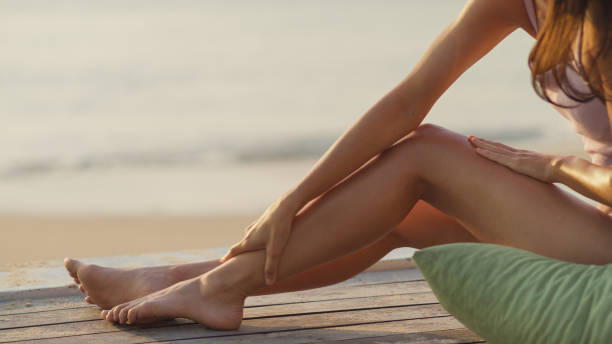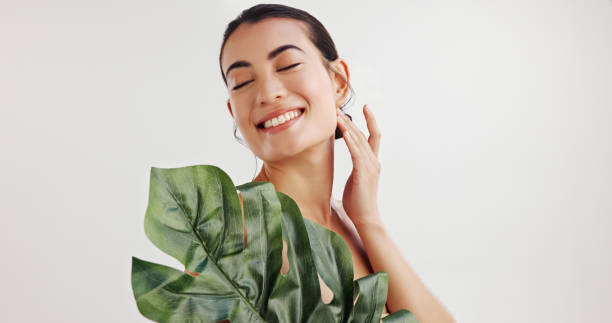“People can achieve the same benefits from retinol on their bodies as they can with retinol on their faces… The benefits include potentially slowing the aging process, like reducing fine lines and wrinkles, by increasing cell turnover and stimulating collagen production. Retinol can also improve skin texture on the body… and firm and brighten skin.”
We often hear about retinol’s powerful anti-aging benefits for the face, but did you know this hero ingredient can work wonders for your body skin too? Whether you're dealing with uneven texture, body acne, or early signs of aging, retinol for the body can help rejuvenate and transform your skin from the neck down.
Let’s explore what body retinol is, how it works, and why it deserves a place in your full-body skincare routine.

Retinol is a form of Vitamin A, part of the broader family of compounds known as retinoids, which are widely recognized for their potent anti-aging, cell-renewing, and acne-fighting properties. When applied topically, retinol penetrates the skin and stimulates cell turnover, promoting the formation of healthier, smoother, and more even-toned skin.
While retinol is a staple in facial skincare, it’s just as beneficial when applied to body skin - which often ages more slowly but can also show signs of damage, dullness, or uneven texture over time.

1. Stimulates skin cell turnover
Retinol speeds up the body’s natural skin-shedding process, helping to remove dead skin cells and reveal fresher, smoother skin underneath. This is especially useful for the body, where cell turnover happens more slowly compared to the face.
2. Boosts collagen production
Collagen is a vital protein that keeps skin firm and elastic. As we age, collagen production naturally declines. Retinol helps stimulate collagen synthesis, reducing sagging, crepiness, and fine lines, especially in areas like the neck, chest, and arms.
3. Reduces signs of aging
From sunspots to wrinkles, body retinol can visibly improve signs of aging by firming the skin and fading discoloration over time. Areas like the décolletage, hands, and shoulders often show early signs of aging - and respond well to retinol treatment.
4. Improves skin texture and tone
Retinol works to even out skin tone and smooth rough patches, making it ideal for treating sun-damaged or dull skin. If you’re not consistent with body sunscreen (most people aren’t), retinol can help correct uneven pigmentation and reduce dark spots.
5. Helps clear body acne
Struggling with acne on the back, chest, or shoulders? Retinol helps unclog pores, reduce inflammation, and minimize post-acne marks, making it an excellent addition to your body acne treatment routine.
The skin on your body is exposed to many of the same environmental stressors as your face - UV rays, pollution, aging, dryness - but is often overlooked in skincare routines.
Incorporating retinol into your body care helps:
1. Start slowly
Begin by using body retinol 2–3 times per week, gradually increasing frequency as your skin builds tolerance. You might experience mild dryness or flaking initially - that’s very normal.
2. Apply to clean, dry skin
Use retinol after showering, on completely dry skin to avoid irritation. Focus on areas that need smoothing or firming: upper arms, thighs, back, chest, and neck.
3. Follow with moisturizer
Always apply a nourishing body moisturizer after retinol to combat dryness and help restore the skin barrier. Look for ingredients like ceramides, hyaluronic acid, glycerin or squalane.
4. Use at night
Since retinol is light-sensitive, it's best applied in the evening. If you must use it during the day (for areas under clothing), follow with broad-spectrum SPF 30+ to protect treated skin.
5. Don’t use on irritated or recently shaved skin
Avoid applying retinol immediately after shaving or on broken skin, as it may cause stinging or irritation.
There are several types of topical retinoids, each with different strengths:
Look for body-specific formulations of retinol, which tend to be milder and combined with soothing ingredients to reduce irritation.
Like facial retinoids, body retinol can cause some initial dryness, redness, or sensitivity. Here are some important precautions:
Retinol is no longer just a facial skincare staple - it’s a powerful full-body treatment that can visibly improve skin health, texture, tone and firmness. Whether you’re looking to tackle body acne, reverse sun damage, or simply smooth and brighten dull areas, body retinol is a smart investment.
✅ Use it consistently
✅ Pair with moisturizer
✅ Protect with SPF
✅ Be patient and let it work
Your body deserves the same level of care as your face - and retinol can help unlock smoother, clearer, and more youthful-looking skin from head to toe. Your future skin (the largest organ of your body) will be so grateful for it.
